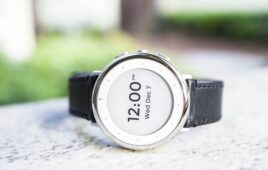Neovasc Inc. reported positive results of a single center, retrospective study using the company’s Reducer system to treat severe refractory angina.
An article, “Safety and efficacy of a device to narrow the coronary sinus for the treatment of refractory angina: A single center real world experience,” published in The Netherlands Heart Journal documented the results from 23 consecutive patients who were implanted with the Reducer.
The published results demonstrated that in all 23 patients the Reducer device was successfully implanted in a day hospital setting without any adverse events. After a median follow-up of 9 months (range 8–14 months) it was found that 17 of 23 patients showed at least one class improvement in their Canadian Cardiovascular Society (CCS) angina score: 8 patients (34.8 percent) improved by 1 CCS class, 7 (30.4 percent) by 2 CCS classes and 2 (8.7 percent) by 3 CCS classes.
“Despite the large range of available anti-ischaemic medical therapies and revascularization techniques, a considerable number of patients still suffer from angina which is refractory to medical treatment,” Dr. Pierfrancesco Agostoni, interventional cardiologist and senior author of the study, said. “The results from this real world cohort, albeit from one center and a relatively small sample size, are consistent with previous studies using Reducer such as COSIRA and found Reducer implantation to be safe and efficacious, with the majority of patients demonstrating significant improvement in angina symptoms following treatment.”
All the cases were performed at University Medical Center Utrecht, Utrecht, the Netherlands. The authors of the report include M. Abawi, F. Nijhoff, P.R. Stella, M. Voskuil, D. Benedetto, P.A. Doevendans and P. Agostoni. The article is available at SpringerLink with Open Access (http://link.springer.com/article/10.1007/s12471-016-0862-2).
In 2016 Neovasc initiated the REDUCER-I (An Observational Study of the Neovasc Reducer System), in Belgium, Germany, the Netherlands, Switzerland and the United Kingdom. The study is a 400 patient, 40 site, post market, multi-center, multi-country three-arm, five-year follow-up study. Its primary endpoint is the percentage of subjects who experience improvement in their angina symptoms defined as a reduction in CCS grade at 6 months as compared to baseline. This study is intended to provide further clinical evidence supporting the use of the Reducer in this patient population.
The Reducer is CE-marked in the European Union for the treatment of refractory angina, a painful and debilitating condition that occurs when the coronary arteries deliver an inadequate supply of blood to the heart muscle, despite treatment with standard revascularization or cardiac drug therapies.
It affects millions of patients worldwide, who typically lead severely restricted lives as a result of their disabling symptoms, and its incidence is growing. The Reducer provides relief of angina symptoms by altering blood flow in the heart’s circulatory system, thereby increasing the perfusion of oxygenated blood to ischemic areas of the heart muscle.
Placement of the device is performed using a minimally invasive transvenous procedure that is similar to implanting a coronary stent and is completed in approximately 20 minutes.




